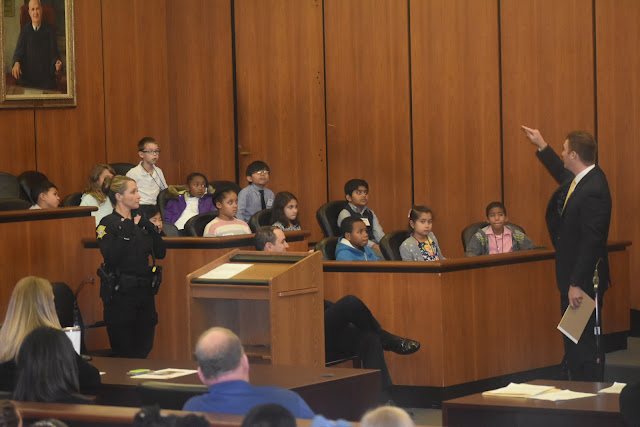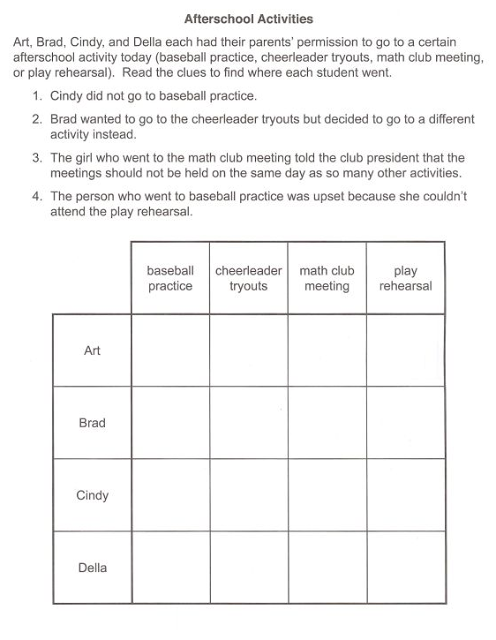Systems: The Gray Area mystery continued to unfold as we considered the role of erosion
in the problem of the dying fish. Students tested the turbidity (amount of sediment) of the
Gray Area waters and found that one in particular had a problem with soil runoff. Our
suspects became the local farm, cattle ranch, logging business, and surprisingly the growing
deer population in the area’s wilderness park. Students followed the chain of events from the
hunting of the deer’s natural predators to the population boom, overgrazing, and lack of plant
cover to stop the erosion of sediment. They also researched the effects of dirty water on
aquatic life.
in the problem of the dying fish. Students tested the turbidity (amount of sediment) of the
Gray Area waters and found that one in particular had a problem with soil runoff. Our
suspects became the local farm, cattle ranch, logging business, and surprisingly the growing
deer population in the area’s wilderness park. Students followed the chain of events from the
hunting of the deer’s natural predators to the population boom, overgrazing, and lack of plant
cover to stop the erosion of sediment. They also researched the effects of dirty water on
aquatic life.
Next, students conducted chemical and biological tests for phosphates and looked at the negative impacts of algal blooms on water life. They also evaluated our chromatogram results for the oil found in the bay. This brought us to the end of our suspect list having investigated acid rain, chlorine, sediments, phosphates, and oil as possible culprits in our mystery. We had an emergency board meeting to go over all the evidence and draw conclusions about the most likely reasons for the dying fish. Students justified their votes with evidence and found that the answer wasn't as cut and dry as they may have thought. As in real life, with so many elements at play, there is often a lot of "gray area" when it comes to making the best choices for us and our environment. We also looked at possible solutions to the problems we've discovered and pros and cons of those as well. I was proud of all of the students’ work, ideas, ability to think through different layers of the issues, and the connections they made to our overarching systems theme.
We finished with a little year-in-review game. Students answered some systems questions using Kahoot and their responses earned them some positive or not-so-positive inputs to their forest and pond snack ecosystems. A little acid rain with that dirt dessert?!? :)
Critical and Creative Thinking: Students enjoyed getting creative as they were called on to
design hats for our fictional friends the ATs. Using this prompt they came up with many clever
strategies to help solve their pest problem.
design hats for our fictional friends the ATs. Using this prompt they came up with many clever
strategies to help solve their pest problem.
Can you design hats
For four-legged ATS
Who are bothered so much
By troublesome gnats?
They finished their novel study of Rachel Carson and continue to enjoy the brain stretching challenges we try to work into our days. You can encourage them to beat summer boredom and keep up their skills using these websites!
M^3 (Mentoring Mathematical Minds) Digging for Data: Students continued to work hard
on analyzing data in our math unit. They have evaluated various charts and graphs for
information that can and cannot be gained and practiced translating between modes of
organizing information. Our latest math focus has been on surveys. Students have learned how to write effect survey questions, conducted their own electronic surveys using Google forms, and finally selected appropriate ways to organize and represent their survey results.
on analyzing data in our math unit. They have evaluated various charts and graphs for
information that can and cannot be gained and practiced translating between modes of
organizing information. Our latest math focus has been on surveys. Students have learned how to write effect survey questions, conducted their own electronic surveys using Google forms, and finally selected appropriate ways to organize and represent their survey results.
Thanks for an amazing year!




































